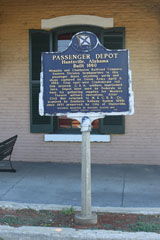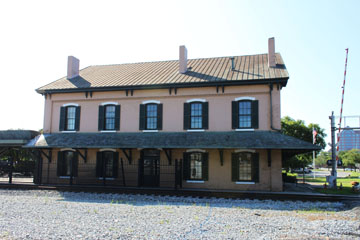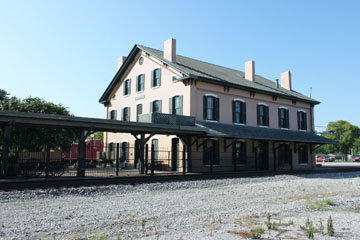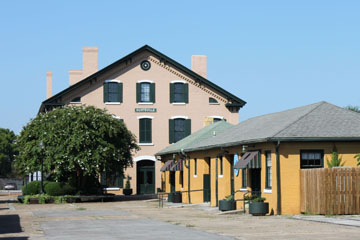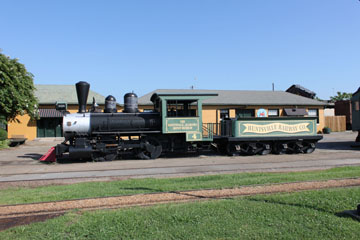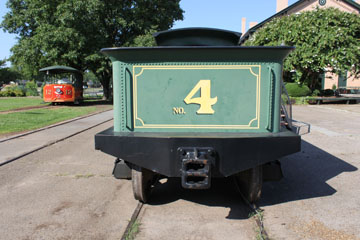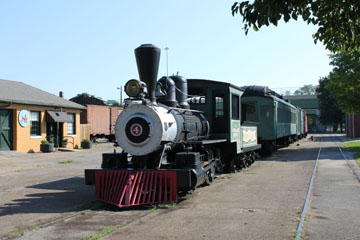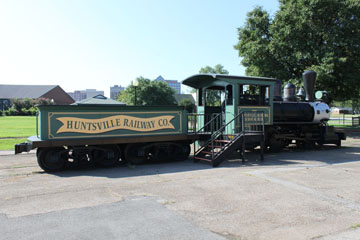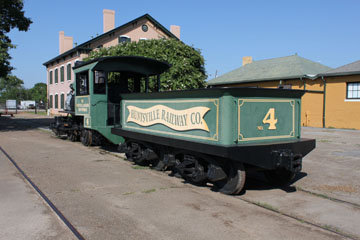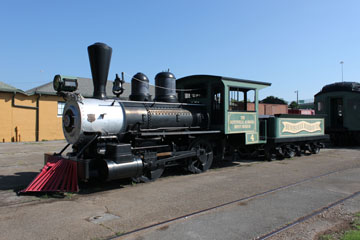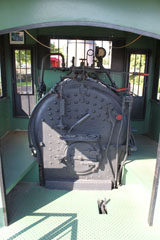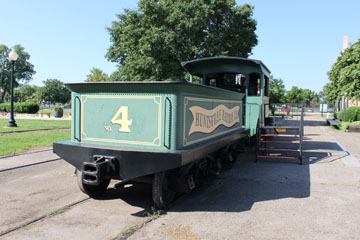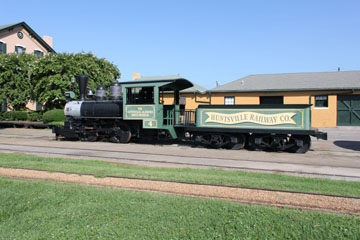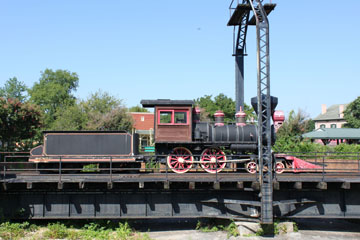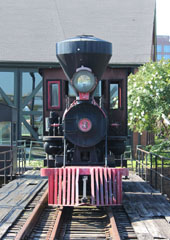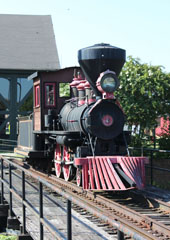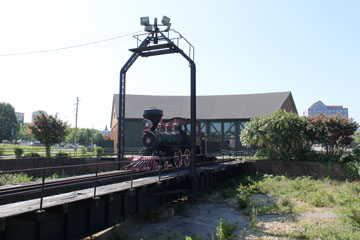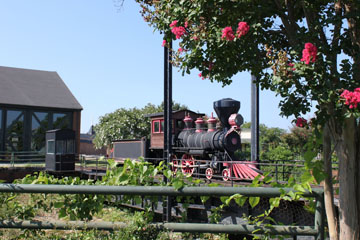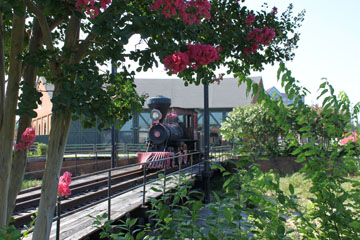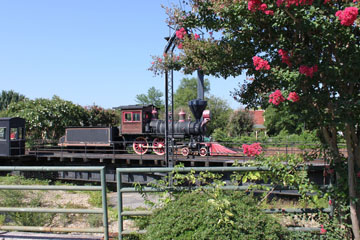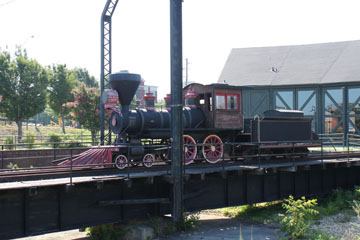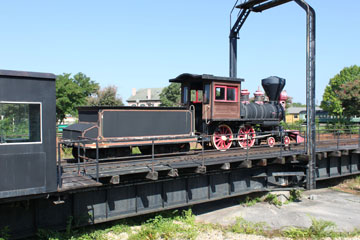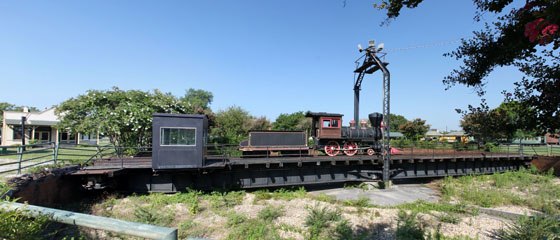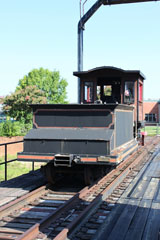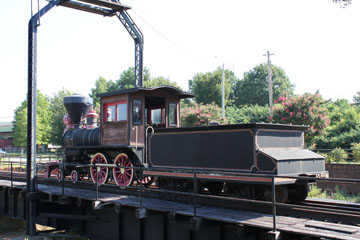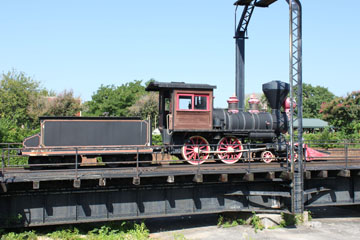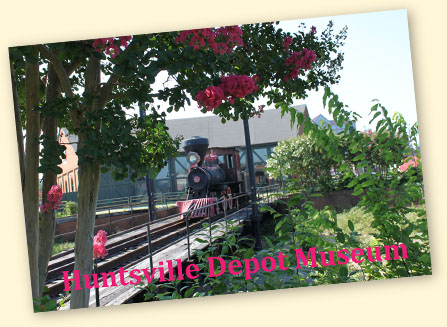

The Huntsville Depot Museum is housed in the oldest surviving railroad depot in Alabama at 320 Church Street. Built in 1860, it is also one of the oldest surviving railroad depot buildings in the US. The museum is part of Huntsville's Early Works Museum, which includes a children's museum and the Alabama Constitution Village, location of the convention on 5th July 1819 to organise Alabama as the 22nd state.
The depot was the local passenger station and offices for the eastern division of the Memphis & Charleston Railroad, which ran from Memphis, TN, to Stevenson, AL. With an interchange there with the Nashville & Chattanooga Railroad, the M&CR became part of the first continuous rail route from the Atlantic Ocean to the Mississippi River. When the Civil War broke out in 1861, it was of great strategic importance as the only east-west railroad through the Confederacy. When Huntsville was captured by Union troops in 1862, the depot housed Confederate prisoners, and graffiti left by the soldiers can still be seen on the walls. After the war, the MC&R struggled to survive and was taken over by the Southern in 1897 when the line became that railroad's Memphis Division.

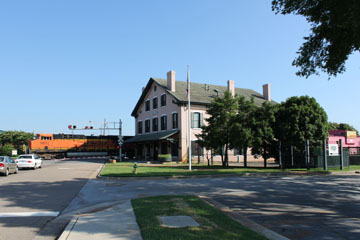
Above, BNSF GE ES44AC #5381 on the tail end of a coal train passes the depot. The museum is right next to the BNSF line.
The last scheduled passenger train, Southern Railway's The Tennessean, stopped at the depot on 30th March 1968.
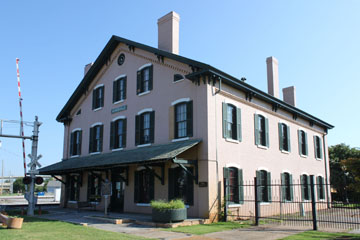

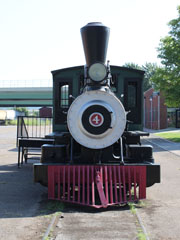
This 0-4-0 locomotive was built by H. K. Porter in Pittsburgh, PA, in 1910 for the Sharon Steel Hoop Company.
The company was incorporated in 1900 in Sharon, PA, in the Shenango River Valley with a mill to roll steel cooperage hoops, cotton ties and bands. It expanded through the first half of the twentieth century, and changed its name to the Sharon
Steel Corporation in 1936, when the locomotive became Sharon Steel #4.
With the steady decline
in US steel production from the 1970s, the company ceased operation in 1995.
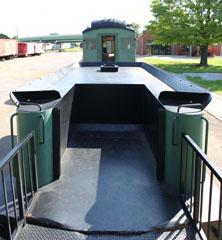
H. K. Porter Inc., began manufacturing locomotives in 1866. It specialised in building locomotives for small
industrial railroads, including gasoline and "fireless" engines. The company
became the largest US producer of industrial locomotives, building almost eight thousand of them up until 1950.
#4 initially worked at the mill near Sharon but was later moved to a steel plant at Lowellville, OH, after the company bought the Youngstown Iron and Steel Company in 1917.
In 1963, #4 was sold to Sam Conti of Port Clinton, OH, and restored to amusement park appearance by the local company, Lakecraft Corp., for an unknown client.

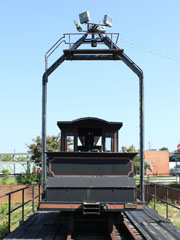
This 36" gauge American (4-4-0) type locomotive was built in 1967 by Crown Metal Products of Wyano, PA, for the Pioneer & Western Railroad in Ft. Lauderdale, FL.
It ran in Davie, FL, and was then in storage at
the Carowinds Amusement Park near Charlotte, NC, and South of the Border in Dillon, SC.
From 1960 to the late 1980s, Crown produced over fifty steam engines for amusement parks, ranging from 15" to 36" gauge. Crown ceased to exist in the early 1990s, but most of its products still operate in parks around the country.


